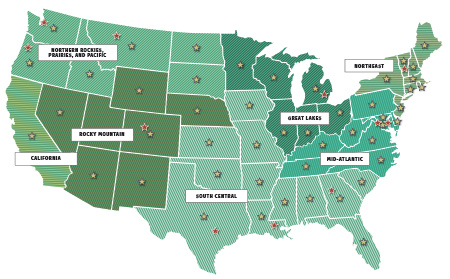Invasive species—non-native plants and animals from other parts of the world that cause ecological harm—are one of the biggest threats to wildlife and their habitats in the United States.
Non-native invaders affect people’s quality of life and harm our pocketbooks by clogging drinking water pipes, killing trees and spreading diseases. Invasive species also affect our supplies of food—attacking a wide variety of crops, decimating commercial fisheries and making ranchlands unsuitable for grazing.
Climate change is expected to exacerbate these impacts by creating more favorable habitats and climates for many invasive species.
Once invasive species become established and spread, it can be extraordinarily difficult and costly to control or eradicate them. As a result, the best practices for dealing with the invasive species are to:
The National Wildlife Federation works to attack the problem of invasive species by:
A new storymap connects the dots between extreme weather and climate change and illustrates the harm these disasters inflict on communities and wildlife.
Learn MoreTake the Clean Earth Challenge and help make the planet a happier, healthier place.
Learn MoreA groundbreaking bipartisan bill aims to address the looming wildlife crisis before it's too late, while creating sorely needed jobs.
Read MoreMore than one-third of U.S. fish and wildlife species are at risk of extinction in the coming decades. We're on the ground in seven regions across the country, collaborating with 52 state and territory affiliates to reverse the crisis and ensure wildlife thrive.
